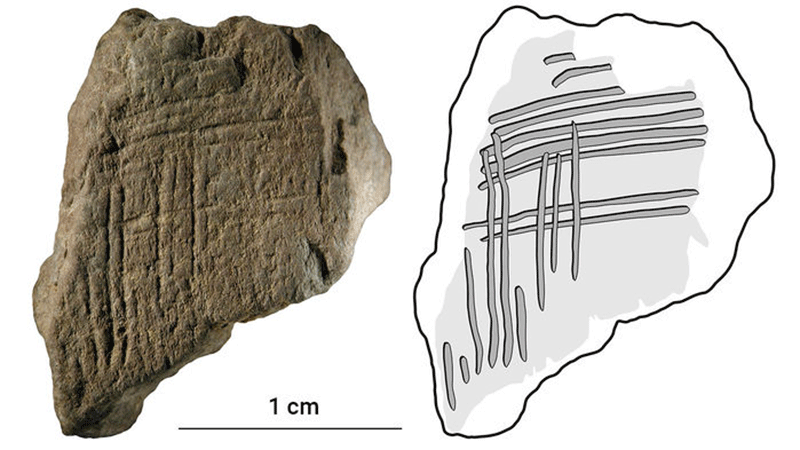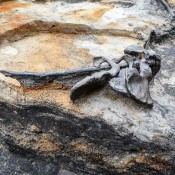Lines scratched on rocks or eggs by humans about 100,000 are being investigated by scientists to define whether they are symbols or simply decorations. A new study at Evolang, a biannual conference on the evolution of language, tests whether they meant something rather than being an early from of painting.
Cognitive scientist Kristian Tylen at Aarhus University in Denmark along with a team of cognitive scientists and archaeologists examined markings on red ochre stones in the Blombos Cave and on ostrich egg shells from a site in South Africa, dating to 52,000-109,000 years ago. The markings were lines, parallel lines and ladderlike images.
To establish that the markings were mainly decorative Tylen and his team tried to clarify whether there was a pattern, since humans would see the patterns easily. To be of any other use, for instance a cultural tradition, they would have to be memorable, since they would have to be made multiple times. That means that people today would also be able to remember and copy them. If the lines were symbols, then each one would have to represent one specific item and they would have to be distinct from each other and gradually even more distinct, since they wouldn’t have fulfilled their function if they all looked the same.
The experiment the team conducted included 65 university students who examined the images and performed tasks of copying or arranging the lines based on a pattern. Initially researchers wanted to see if they would classify as distinct the markings from different sites and whether they would be able to copy them after looking at them briefly.
In another test a person were shown a marking to one of their eyes while with the other eye they were looking at a field of overwhelming flickering colours.
The results of the experiments showed that younger lines and markings were more clearly defined and more aesthetically regular than older ones, with participants remembering and reproducing them better. But they could not be arranged into the correct groups and signs were not distinguished from each other. Therefore the markings cannot be classified as symbols.
The findings need to be verified with further tests, since the sample was rather small, but the first results have intrigued archaeologists who might have found a way to test whether prehistoric engravings are symbolic or not.






